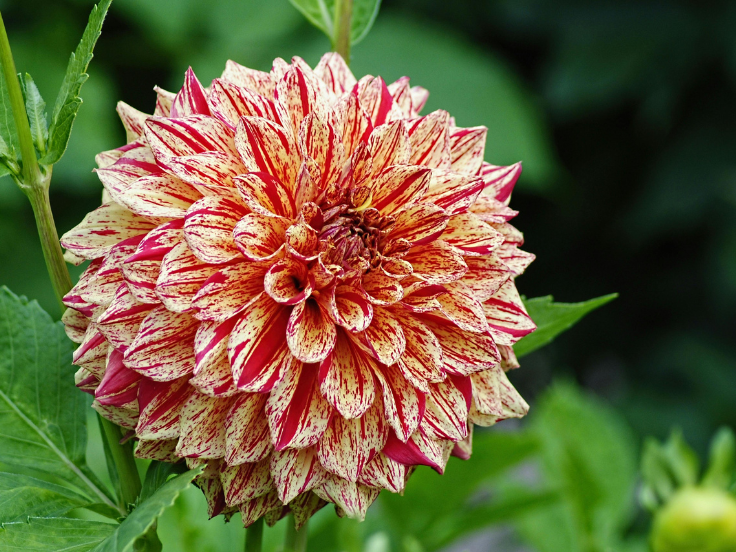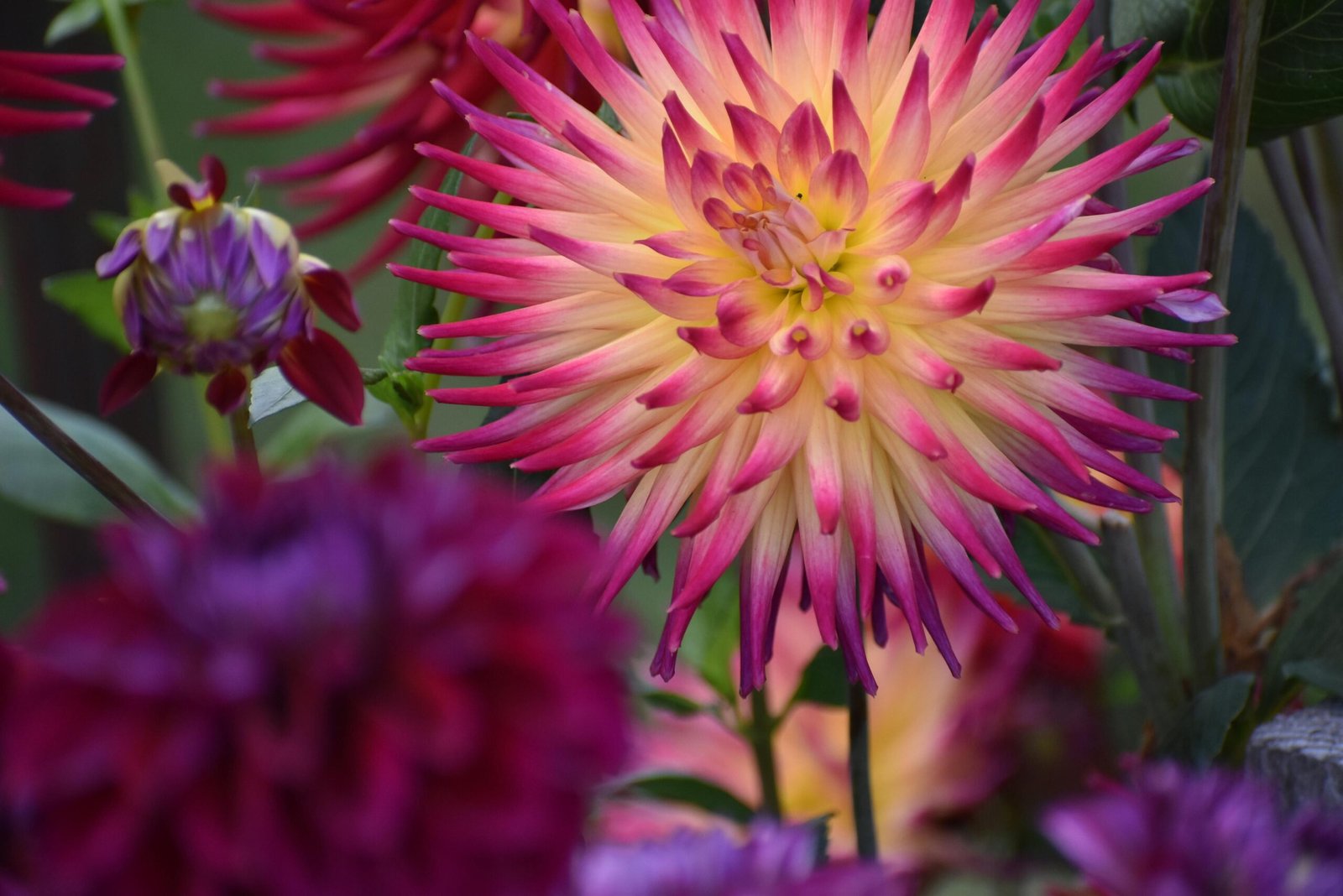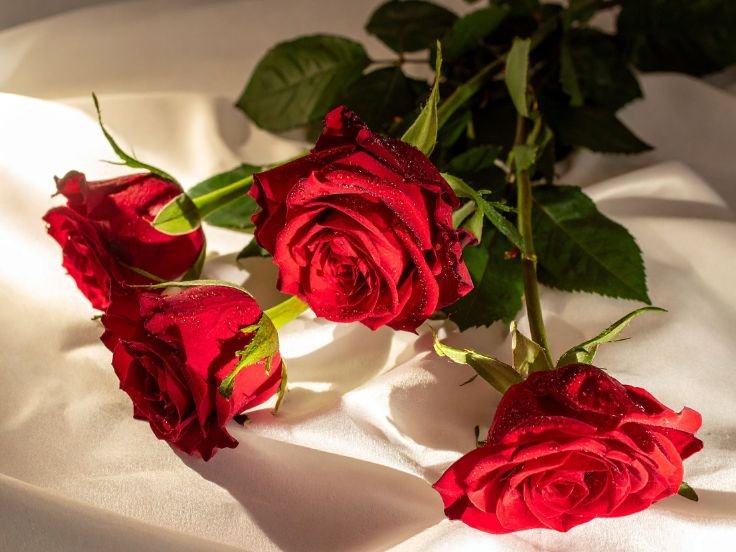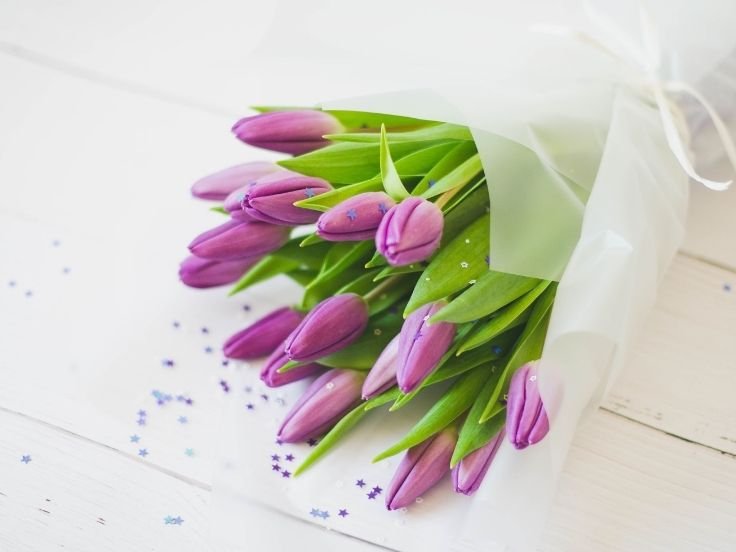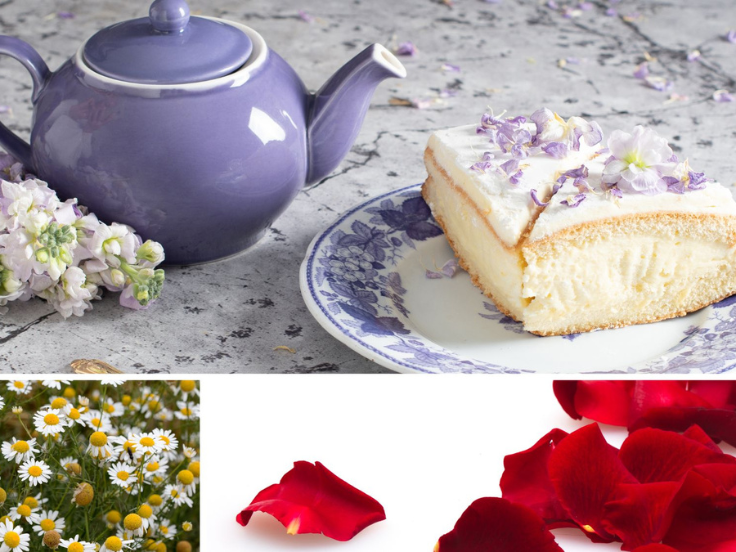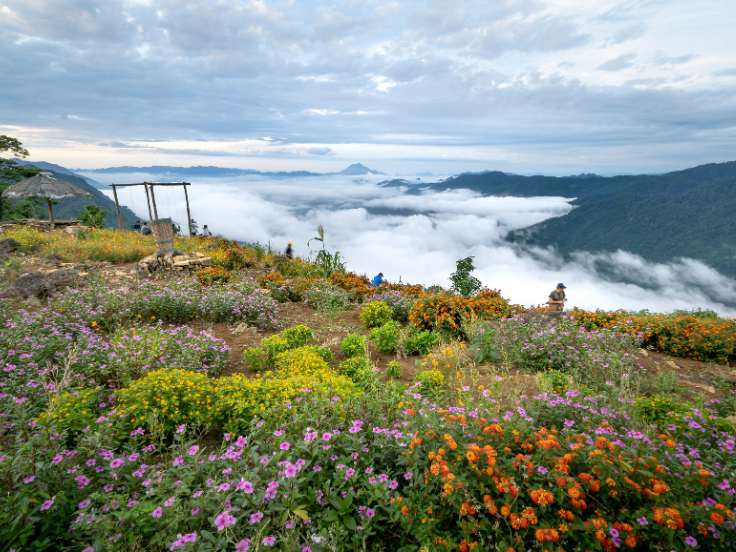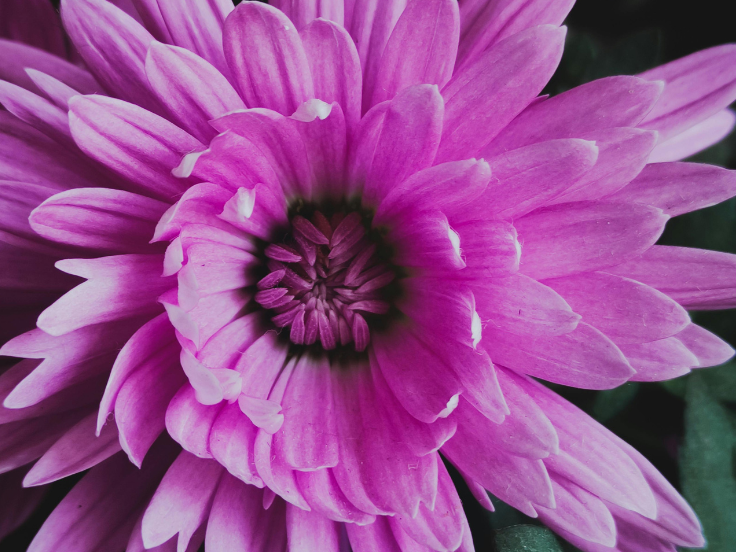Meet the Dahlia: A Bloom That Speaks in Colour
In India, dahlias—known as डहेलिया फूल in Hindi—are cherished both for their ornamental charm and their role in ceremonial décor. These floral wonders dazzle with a stunning range of colours, textures, and personalities. More than just a visual delight, dahlia petals symbolize sophistication, power, and originality.
Whether thriving in curated garden beds or brightening up balcony pots, the dahlia captivates with its bold hues and distinctive blooms. Celebrated for their large, dramatic flowers and vibrant colour palette, dahlias often grace weddings, religious ceremonies, and festivals across the country. In this comprehensive guide, we’ll explore their origin, popular types, cultivation techniques, and seasonal care—helping you fully appreciate and grow this floral marvel.
From Aztec Fields to Indian Gardens: The Journey of the Dahlia
The dahlia traces its roots to the highlands of Mexico and Central America, where it was first cultivated by the Aztecs for both medicinal and nutritional purposes, particularly valuing its tuberous roots. These early uses highlight the flower’s practical importance long before its ornamental appeal gained fame.
In the 18th century, Spanish botanists brought dahlias to Europe, where their vivid colours and intricate, layered petals quickly captured the hearts of horticulturists and gardeners alike. Dahlias belong to the Asteraceae family, which also includes familiar blooms like sunflowers and daisies.
Today, there are more than 40 recognized species and over 20,000 registered cultivars—each uniquely mesmerizing. With their increasing global appeal and deep cultural relevance, dahlias continue to flourish in gardens and celebrations around the world.

Bloom Season Across Indian Climates
In India, the dahlia season typically begins in the latter half of winter, particularly in the northern regions, and extends into early spring. The blooming period usually spans from January to March, with flowers often lingering into April depending on the climate. In hilly areas, dahlias may bloom as late as May, benefiting from cooler temperatures.
This long blooming window makes dahlias especially valuable for seasonal festivities such as Makar Sankranti, Vasant Panchami, and Holi, where their vibrant colours add beauty to traditional floral décor.
For successful growth, dahlias should be planted between October and November, giving their tubers ample time to establish roots before the onset of winter. By January, the plants begin to flower, continuing their display for several months.
Even novice gardeners can grow dahlias with basic care, making them a popular choice in both urban balconies and rural gardens. Their seasonal availability aligns perfectly with India’s cultural calendar, enhancing their appeal for ceremonial, decorative, and home gardening purposes.
Understanding Dahlia Tubers
This section aims to provide an understanding of dahlia roots and tubers. The roots of dahlias are tuberous and function as subterranean storage organs. This behaviour is in contrast to the majority of plants, which develop primarily from their seeds. The tubers of the dahlia plant can store water and nutrients, allowing the plant to survive periods of dormancy and re-sprout each year. Once the growing season concludes, Trim the plant so that it is three to four inches above the ground. Dig up the tubers in a gentle manner. Remove the soil and allow it to air dry for a minimum of a few days. Put the item in a cold, dark spot and store it in peat moss or sawdust. This procedure helps to maintain the vitality of dahlias for the subsequent growing season, resulting in them being both cost-effective and environmentally friendly.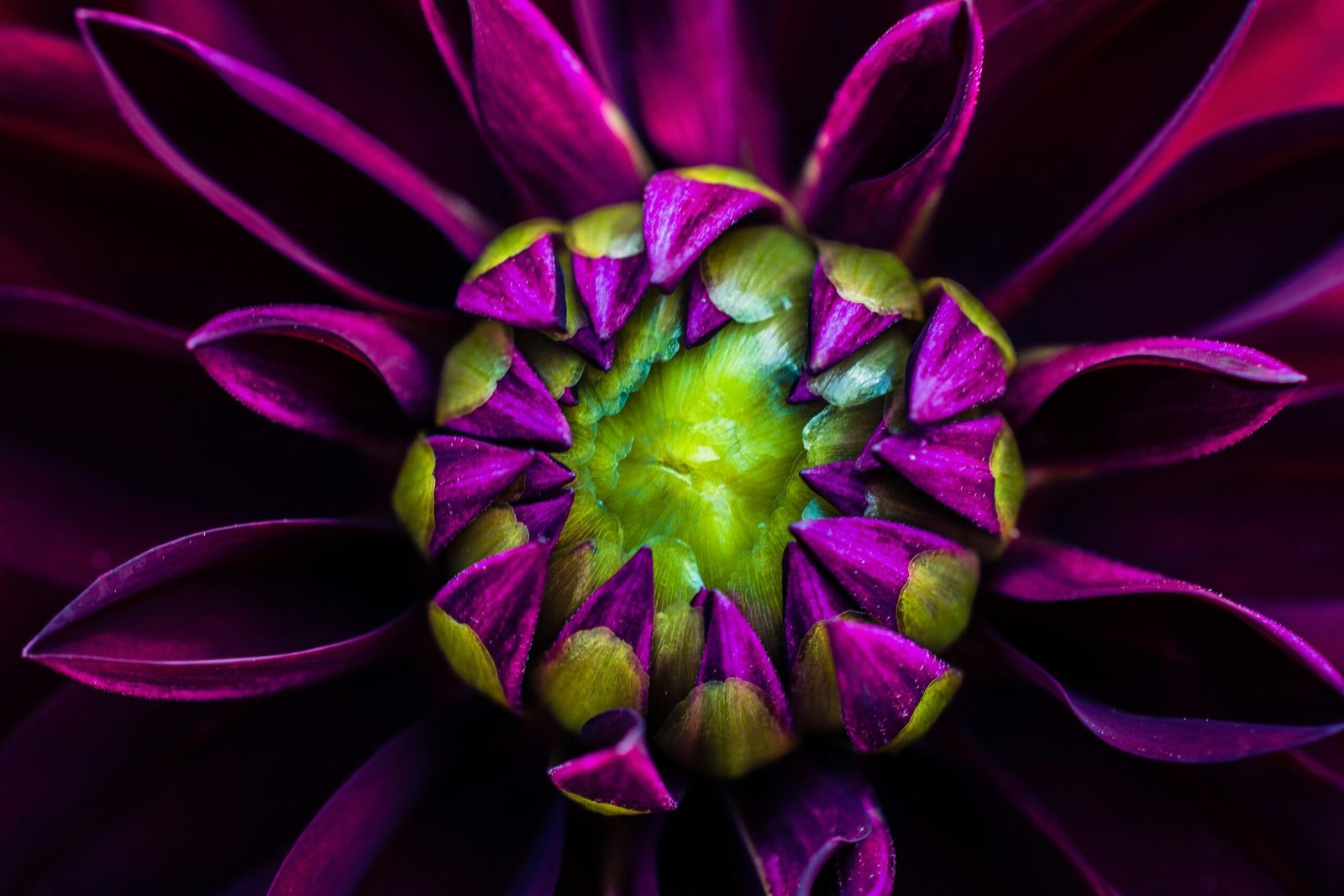
From Tuber to Triumph: Cultivating Dahlia the Right Way
Growing dahlias from either tubers or seeds is reasonably straightforward, making them an excellent choice for inexperienced gardeners who are on a budget. Growing dahlias from seeds offers you the possibility of experimenting with novel hybrids, although tubers are now the most reliable and efficient method of cultivation. However it is crucial to perform routine maintenance, which includes feeding, staking tall types, and cautiously monitoring for pests like aphids and powdery mildew. Instructions for Planting Step-by-Step so can enjoy months of vibrant flowers with very little effort:- Opt for Healthy Tubers: Ensure that the tubers are free from mold or decay.
- Site selection should include full sunlight and soil that drains properly. Dig holes four to six inches deep, ensuring the eyes (sprouting points) point upward. It is important to ensure that the containers and pots have drainage holes and are at least 12 inches deep. To allow for ventilation, the spacing should be between 18 and 24 inches.
- Water Lightly: After planting, water the plants barely until they begin to show signs of sprouting.
- Mulch: Apply mulch to the soil to eliminate weeds and maintain soil moisture.
Ideal conditions for growing dahlia
To see blossoms that are full of colour and luxuriant, you will need to create the ideal conditions for the development of dahlias. Dahlias are plants that can thrive in sunny conditions and in well-draining soil. There is a checklist for growing vibrant dahlias:- Planting: Plant your dahlias at least six to eight weeks prior to the final frost.
- Sunshine: a minimum of six to eight hours of direct sunshine per day
- Soil: slightly acidic to neutral (pH 6.0–7.5), rich in compost
- Watering: a deep watering two or three times per week (more frequently during dry periods)
- Fertilizer: a formula that is low in nitrogen and balanced (for example, 5-10-10) Regular deadheading, which involves removing dead flowers, can also promote continuous flowering.
Dahlia Diversity: A Bloom for Every Mood
Different kinds of dahlias include breath-taking examples. We categorize dahlia flower varieties based on the shape of their petals, the size of their blooms, and their texture. Here are some of the most common types –- Decorative Dahlias: Fully double blooms with broad, flat-tipped petals.
- Cactus Dahlia: Petals are pointed and rolled back, giving a spiky appearance.
- Ball Dahlia: Fully double flowers with round, ball-shaped heads. Petals are blunt or slightly rounded and arranged in a spiral.
- Pompon Dahlia: Smaller version of ball dahlias. Flowers are under 2 inches in diameter, with tightly packed petals.
- Anemone-Flowered Dahlia: One or more rows of flat petals surrounding a dense, tubular central disc. Has a unique and eye-catching shape.
- Collarette Dahlia: Single outer row of petals and an inner ring (collar) of smaller petals, often in a contrasting colour.
- Peony-Flowered Dahlia: Resemble peonies. Have 2 or more rows of petals with a visible centre disc.
- Single Dahlia: Only one row of petals with a clear centre disc. Popular in pollinator-friendly gardens.
- Orchid-Flowered Dahlia: Open-cantered with narrow, curled petals. Often whimsical or exotic in appearance.
- Waterlily Dahlia: Fully double with broad, slightly curved petals, giving a floating waterlily look.
Why Grow Dahlias? Beauty, Benefits, and Beyond
There are several reasons why you should think about including dahlias in your collection of plants:- Extended Bloom Period: In India, they bloom from January to March, bringing liveliness to winter gardens.
- Pollinator Friendly: They attract bees and butterflies, which helps to sustain the ecology of your garden.
- You can reuse the tubers for numerous seasons, making them an economical option.
- When provided with the appropriate care, they thrive with minimum intervention, resulting in low maintenance.

Conclusion: The Timeless Charm of Dahlias
Dahlias are more than just flowers—they are a celebration of nature’s artistic brilliance. From their ancient roots in the mountains of Mexico to their radiant presence in Indian gardens, dahlias continue to enchant with a beauty that is truly unmatched.
Their ability to thrive in diverse environments, combined with low maintenance needs and striking decorative appeal, makes them a favourite among seasoned gardeners and beginners alike. Whether blooming in a well-tended garden bed, adding colour to a balcony pot, or arranged in a vibrant bouquet, dahlias infuse life with joy, colour, and elegance.
Welcoming dahlias into your home or garden is more than an aesthetic choice—it’s an invitation to experience the magic and wonder of nature, season after season.
What does Dahlia Flower Symbolize?
Dahlia flowers symbolize elegance, creativity, and resilience, with each colour adding a unique meaning—red for power, white for purity, and pink for grace. They also represent inner strength, personal growth, and sometimes everlasting love, making them a meaningful choice for various occasions.
Are Dahlia Flower Petal edible?
Yes, dahlia petals are generally edible and can add colour and a mild, floral flavour to dishes. Some varieties have a slightly peppery aroma. The tubers are also edible, with flavours ranging from sweet to spicy depending on the variety and growing conditions. Always ensure they are pesticide-free before consumption.
Will dahlia cuttings produce flowers in their first year?
Yes, dahlia cuttings can flower in their first year and often grow more vigorously than those started from tubers. They may even bloom earlier and typically develop tubers by the end of the season, allowing for future propagation.
Where should you cut a dahlia flower for harvesting or pruning?
To maximize stem length and encourage future blooms, cut dahlias just above a leaf node—the spot where leaves emerge from the stem. This promotes new shoot growth from the node and helps the plant produce longer, stronger stems in the future.
What is the difference between dahlias and chrysanthemums?
Dahlias and chrysanthemums, both belong from the Asteraceae family and are often confused due to their similar shapes and colour of palettes. However, they have distinct characteristics. Dahlias, native to Mexico, offer a broader variety of shapes and sizes—like pompon, cactus, and ball forms—while chrysanthemums, native to East Asia, are valued for their medicinal uses and resilience. Chrysanthemums tend to tolerate shade and humidity better, whereas dahlias prefer full sun and drier conditions.



